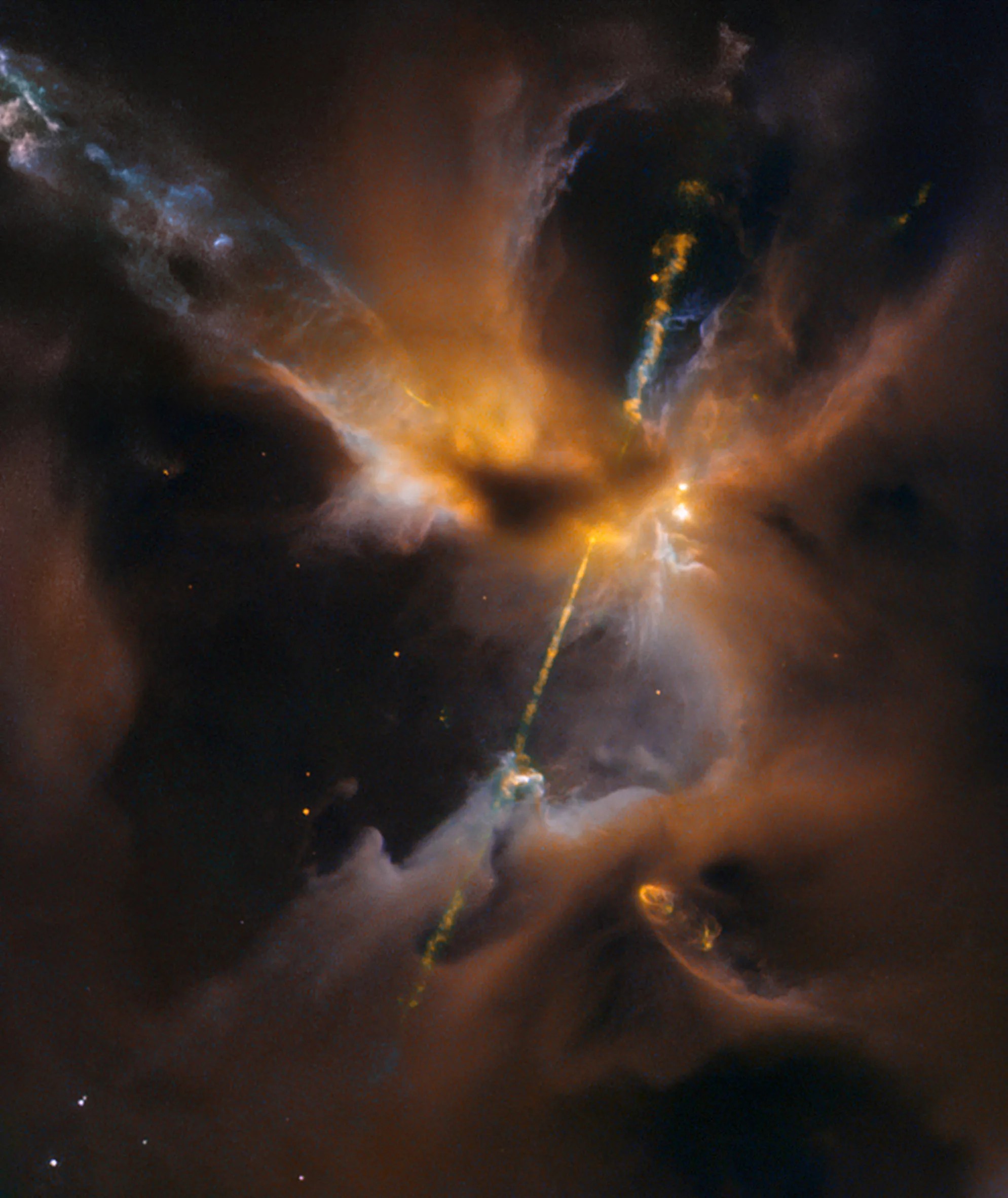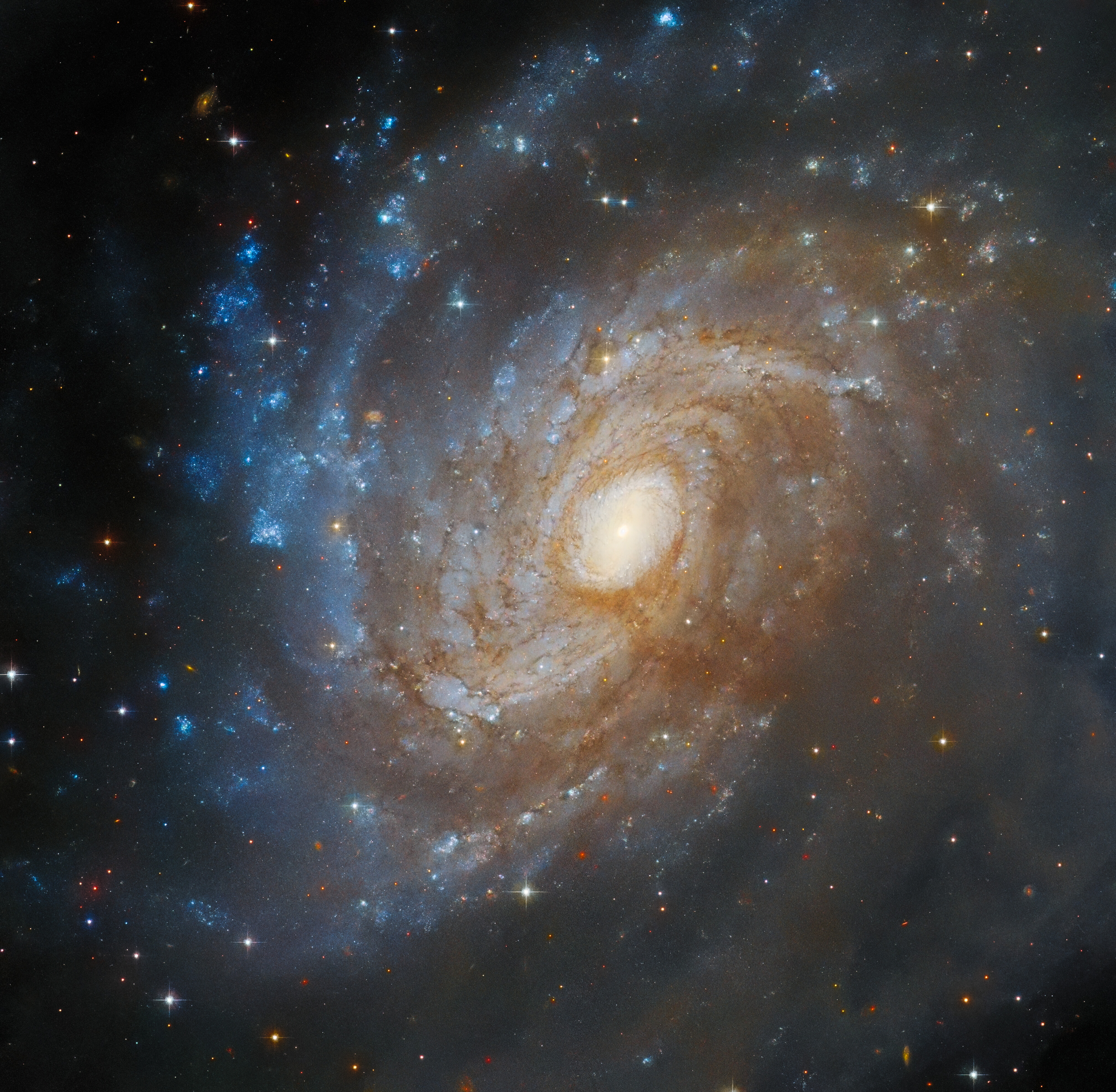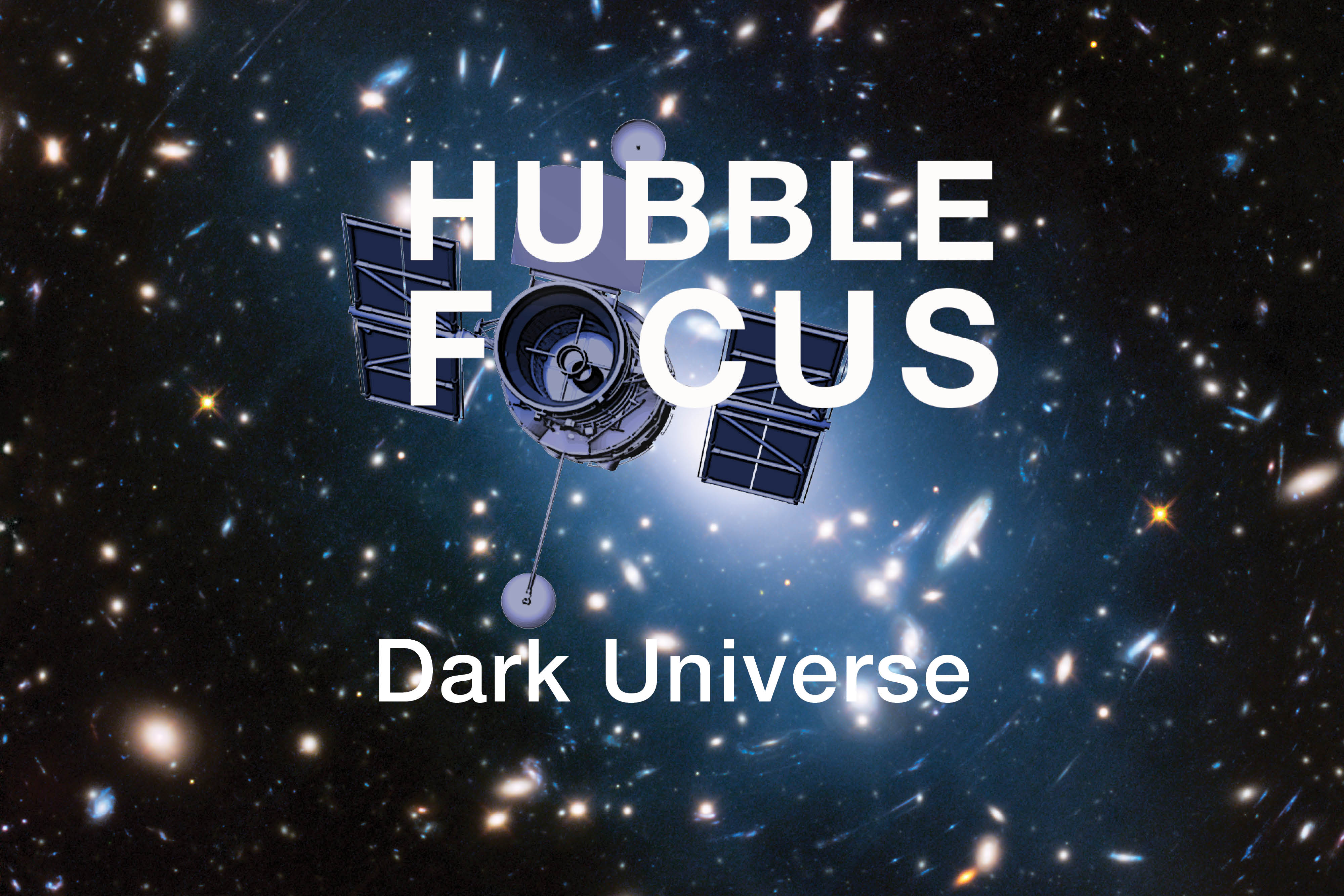2 min read

Lying inside our home galaxy, the Milky Way, this Herbig–Haro object is a turbulent birthing ground for new stars in a region known as the Orion B molecular cloud complex, located 1,350 light-years away.
Herbig–Haro (HH) objects are bright patches of nebulosity associated with newborn stars that form when narrow jets of partially ionized gas ejected by stars collide with nearby clouds of gas and dust. This image of Herbig-Haro Jet HH 24 was taken by the Hubble Space Telescope in 2015.
When stars form within giant clouds of cool molecular hydrogen, some of the surrounding material collapses under gravity to form a rotating, flattened disk encircling the newborn star.
Although planets will later congeal in the disk, at this early stage the protostar is feeding on the disk with a voracious appetite. Gas from the disk rains down onto the protostar and engorges it. Superheated material spills away and is shot outward from the star in opposite directions along an uncluttered escape route – the star's rotation axis.
Shock fronts develop along the jets and heat the surrounding gas to thousands of degrees Fahrenheit. The jets collide with the surrounding gas and dust and clear vast spaces, like a stream of water plowing into a hill of sand.







